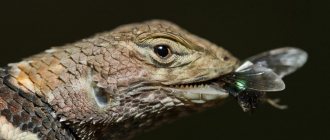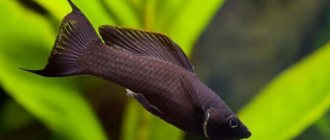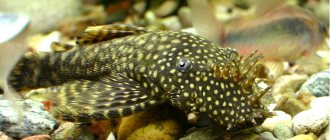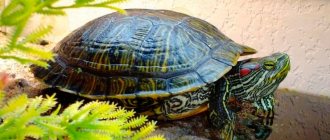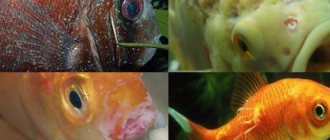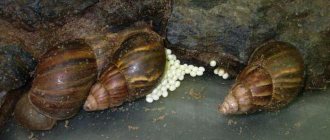Lizards have long been very popular and are increasingly entering our homes as pets. Indeed, many of them do not require expensive equipment and special devices; they live well and even reproduce with proper maintenance.
A beautifully designed terrarium is no longer a luxury, but a fairly common interior decoration. The cute faces of house geckos peeking out from their homes invariably delight their owners and delight guests. Today we present a hit parade of the most common domestic lizards from the gecko family (lat. Gekkonidae).
Caring for Lizards as Pets
If you are interested in purchasing one of the lizards listed above, do your research to ensure you have the time, space and money for the species you are considering. While some lizards require only a small tank and little environmental control, others require very large enclosures and expensive setups. You should also be sure that the temperament of the lizard you choose suits your home. Some are sociable, some are shy, and some can even be aggressive.
Source
Science writer, professional zoologist and educator with over 10 years of experience working with students, scientists and government experts. Freelance author of the website “Knowledge is Light”.
Geckos
These are small, but very active and funny lizards. Thanks to the special design of their legs, they can run on any surface - from floor to ceiling.
Such reptiles are very famous for their love of climbing walls, no matter how smooth they are. This becomes possible due to the presence of a large number of microvilli and growths on their short limbs.
Therefore, you should always keep nimble domestic lizards in sight, especially until the period of adaptation to the new environment ends.
The size of the reptile can vary from 1.5 to 35 centimeters. You can easily recognize a gecko by its appearance.
Such lizards have a flattened body, very small legs, a long thick tail and a disproportionately large head.
It is by the appearance of this part of the body that one can learn a lot about the reptile’s way of life and nutrition (it is in this section that fat and water from the entire body accumulate).
The second feature of this breed is the absence of eyelids on the eyes, therefore, in order to avoid drying out the eyes, the gecko has to lick them from time to time. These small reptiles live on average 15-20 years.
Reproduction
During the mating season, males of many lizard species acquire bright colors. They are characterized by peculiar courtship games, during which the male demonstrates bright body color in front of the female, taking specific “courtship” poses, to which the female responds with certain signaling body movements, consisting, for example, of swaying or trembling of the raised front legs and wriggling of the tail.
The vast majority of lizards lay eggs, the number of which in one clutch ranges from 1-2 in the smallest species to 8-20 in medium-sized ones and several dozen in large lizards. The eggs are enclosed in a thin, moisture-permeable, colorless, leathery shell that can stretch during embryo development. Usually the female lays her eggs in a hole or shallow hole, then covering it with soil. Eggs are often laid under stones, in rock cracks, in hollows or under the bark of trees, in wood dust, and by some geckos they are glued to tree trunks and branches.
A minority of lizards are ovoviviparous. Their eggs, devoid of a dense shell, develop inside the mother’s body, and the cubs are born alive, freeing themselves from the thin film that covers them in the oviducts or immediately after birth. True viviparity has been established only in some skinks and American night lizards Xanthusia, the embryos of which receive nutrition through the false placenta - blood vessels in the walls of the mother's oviducts. Viviparity is usually associated with harsh living conditions, for example, living in the far north or high in the mountains.
In most cases, having laid eggs, the female never returns to them, and the developing embryos are left to their own devices. Real care for the offspring is observed only in some skinks and spindles, the females of which wrap themselves around the laid eggs, periodically turn them over, protect them from enemies, help the young free themselves from the shell and, remaining with them for the first time after hatching, give them food and protect them in case of danger .
Some species of lizards lay eggs with almost fully developed embryos, so the young can hatch within the next few days. By the time of hatching from the egg, the embryos develop a special egg tooth in the front corner of the mouth, with which, shaking its head, the young lizard, like a razor, cuts a gap in the egg shell to exit. Recently, the phenomenon of so-called parthenogenesis has been discovered in a number of lizards, when females lay unfertilized eggs in which normal offspring develop. There are no males during parthenogenesis, and such species are represented only by females.
Population and species status
Due to the large number of species, we will focus only on those included in the Red Book of Russia:
- medium lizard – Lacerta media;
- Przewalski's foot-and-mouth disease – Eremias przewalskii;
- Far Eastern skink – Eumeces latiscutatus;
- gray gecko – Cyrtopodion russowi;
- barbour foot-and-mouth disease – Eremias argus barbouri;
- Squeaky gecko – Alsophylax pipiens.
In the most dangerous position on the territory of the Russian Federation is the gray gecko, with its habitat in Art. Starogladkovskaya (Chechen Republic). Despite the high number in the world, the gray gecko has not been found in our country after 1935.
This is interesting! Barbour's foot-and-mouth disease is also rare in Russia, despite the high numbers in some places: near Ivolginsk (Buryatia) in 1971, 15 individuals were counted in an area of 10 * 200 m. The species is protected in the Daursky State Nature Reserve.
Population of the Far Eastern skink on the island. Kunashir numbers several thousand individuals. The species is protected in the Kuril Nature Reserve, but places with the maximum number of lizards are located outside the reserve. In the Astrakhan region, the number of squeaky geckos has decreased. Przewalski's foot-and-mouth disease occurs sporadically in the Russian Federation, more often on the periphery of its range. There are also a small number of medium-sized lizards, whose Black Sea populations suffer from excessive recreational pressure.
Agamas
These are quite large reptiles that reach 50-60 centimeters in length and grow up to 500 grams in weight.
A distinctive feature in the appearance of the agama is a triangular head, a thick but flat body, and a pouch under the throat.
We invite you to familiarize yourself with Degu: care and maintenance at home with photos and comments
This type of lizard cannot regenerate its limbs, so you should treat agamas with extreme care and concern. The average lifespan of an agama is 10 years.
If you keep a lizard at home correctly, it can live several years longer.
What to feed a lizard from the street?
Depending on their size, they are fed:
- worms;
- flies,
- locusts or grasshoppers;
- black cockroaches, specially designed to feed reptiles and spiders;
- mice or rats. ...
- fish and meat, checked for the presence of parasites after removing all kinds of cartilage and bones;
- snails.
Interesting materials:
How to remove Bonjour Windows 10? How to remove a firewall? How to remove atom browser from your computer? How to remove Firefox browser? How to remove Internet Explorer 8 browser? How to remove the browser on Android? How to remove a browser on a laptop? How to remove the browser from Android? How to remove an alarm clock on Android? How to remove CCleaner from a Windows 10 computer?
Blue tongue skink
If the snake becomes a good first snake, then everyone who dreams of lizards should try to get skinks. This is a rather expensive pet, but when answering the question of which reptile is best to get, our consultants often suggest it.
A terrarium of 90*45*30 cm is suitable for keeping an adult animal.
In nature, skinks constantly dig in the ground, looking for food. Therefore, inside the terrarium there must be a suitable, safe substrate for this. You can use an inexpensive substrate made from a mixture of sphagnum and bark.
Like snakes, such lizards require the creation of cold and warm corners with temperatures of 25-26 and 35-40 degrees in the cold and warm zones, respectively. You need to monitor temperatures using a thermometer. This lizard is active during the day, so an ultraviolet lamp must be placed in the terrarium. You also need to organize constant access to drinking water - it is poured into a low drinking bowl and placed in a cold corner.
Skinks are omnivores. They eat insects and plant matter, so you don't have to deal with mice. They are also easy to tame and eat specialized Repashy food.
Standard feeding requirements:
Skinks need to be fed a variety of foods. When feeding, food is sprinkled with a special complex of vitamins and calcium.
Classification of reptiles
According to the traditional scientific classification, the class Reptiles (Reptiles) includes four modern orders:
- Testudines - Turtles;
- Crocodilia - Crocodiles;
- Rhynchocephalia - Beaked heads;
- Squamata - Scaly.
The last order (Scaly) is divided into suborders. Among them:
- Serpentes - Snakes;
- Amphisbaenia - Amphisbaenia (two-walkers);
- Lacertilia - Lizards;
- Chamaeleonia - Chameleons.
There are a lot of species of lizards.
More than 9 thousand species of animals belonging to the class of Reptiles are known in the world. More than 6 thousand of them are species classified in the suborder Lizards, which include:
- infraorder monitor lizards (Varanoidea);
- infraorder spindle-shaped (Anguimorpha);
- infraorder gecko-like (Gekkota);
- infraorder iguana (Iguania);
- infraorder skinks (Scincomorpha).
Appearance
There is no uniformity in the appearance of lizards, with the exception of the background coloring of the body, designed to camouflage the reptile among its native landscape. Most of the lizards are colored green, gray, brown, olive, sand or black, whose monotony is enlivened by various patterns (spots, stains, diamonds, longitudinal/transverse stripes).
There are also very noticeable lizards - the long-eared round-headed lizard with a scarlet open mouth, the bearded dragon, and colorful (yellow and orange) flying dragons. The size of the scales varies (from small to large), as does the way they are laid on the body: overlapping, like a tile roof, or end to end, like tiles. Sometimes the scales transform into spines or ridges.
In some reptiles, such as skinks, the skin gains special strength from osteoderms, bony plates that are located inside the horny scales. The jaws of lizards are lined with teeth, and in some species, teeth even grow on the palatine bones.
This is interesting! The methods for attaching teeth to the oral cavity vary. Pleurodont teeth are periodically replaced and therefore do not sit firmly on the inside of the bone, unlike acrodont teeth, which are not replaced and completely fuse with the bone.
Only three species of lizards have acrodont teeth - amphisbaenas (two-walkers), agamas and chameleons. The limbs of reptiles are also structured differently, which is due to their way of life, adapted to a certain type of earth’s surface. In most climbing species, geckos, anoles and some skinks, the underside of the fingers is transformed into a pad with setae (hair-like outgrowths of the epidermis). Thanks to them, the reptile tenaciously holds onto any vertical surfaces and quickly crawls upside down.
California king snake
Despite the loud name, such a snake is not dangerous. She has medium sizes and many color options. This is a good option if you want to choose a reptile to keep in a small terrarium measuring 45*45*30 cm.
As with other pets, the California kingsnake needs to be divided into warm and cold zones. Mice are usually used as food, and the standard diet is once a week.
If you plan to breed California snakes, you should keep them individually. Living together can lead to one of the reptiles eating the other.
Iguanas
- The common iguana is an inhabitant of the subtropics, a very massive species. These lizards prefer to live in trees. Appearance: often reach impressive sizes (up to one and a half meters in length. Despite the facts described above, iguanas are often purchased as pets. Living conditions: the natural habitat of the green iguana involves very high temperatures. For this reason, you should stock up on a large number of heating lamps, including ultraviolet lamps.
- The collared iguana is another dangerous predator from America. Appearance: rather miniature lizards, rarely reaching a length of more than 32 centimeters. Conditions of detention: a very nimble and cruel representative of domestic lizards, therefore you should take care of purchasing live food (large insects, mice). Just like other iguanas, collared iguanas require a lot of light and warmth. The temperature under the lamps should reach 40 degrees or more.
Spotted leopard gecko
You can also choose a pet from spotted leopard geckos. This is a very popular lizard for breeding and does not require you to make a large investment when purchasing a terrarium. She will feel comfortable in a terrarium 45*45*30 cm.
To prevent the leopard gecko from getting sick and growing, it will be necessary to create two zones in the place where it is kept. The cold corner has a temperature of 24-27, the warm corner - 29-32 degrees.
There are a few simple content requirements:
- Organize the right substrate. Specialized sand or clay will do.
- Create shelters. It is best if they are in both areas of the terrarium.
- Prepare a place for molting. There must be a space in the container with slightly increased humidity, where the animal could shed quietly and not get hurt.
Lizards eat insects, so they can be fed crickets, cockroaches and locusts. You can also add mealworms and zoophobass, hawkmoth caterpillars, moths and others to your food.
The young are fed every day. Adults can be given insects three to four times a week. With each feeding you need to use a special calcium supplement, which is important for the growth of a healthy pet.

